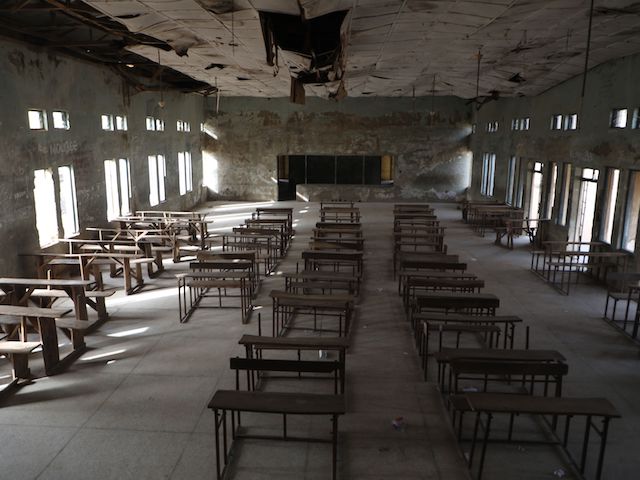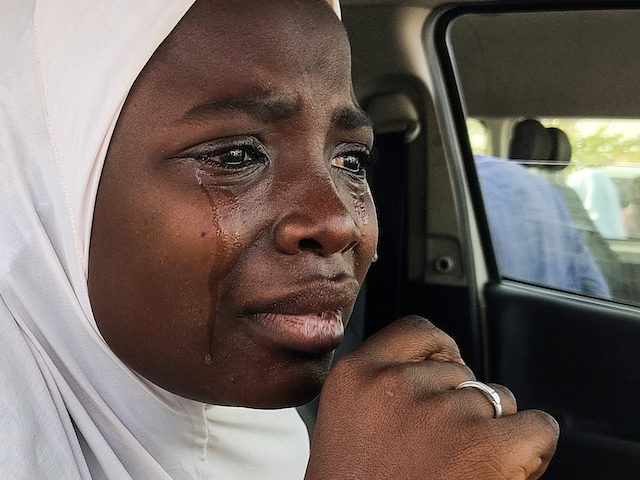Police in Nigeria’s northwestern Zamfara state on Thursday confirmed that at least 68 children remain missing from a school after unknown assailants assaulted the school and abducted them.
Police claimed they managed to rescue five girls in the incident.
“The ongoing search and rescue mission is yielding positive result as five abducted female students were today rescued,” a public relations officer for the Zamfara state police force said in a statement issued September 2. “The victims were medically checked at the hospital, debriefed by the police, and reunited … with their families.”
The Zamfara state police force on September 1 confirmed “the abduction of 73 male and female students” from the Government Day Secondary School in the village of Kaya. The kidnapping took place on Wednesday morning “after an invasion by a large number of armed bandits on the school,” Nigeria’s Vanguard online newspaper reported.
“Following the attack, Zamfara state officials ordered [the] closure of all primary and secondary schools in the state. They also imposed travel restrictions as well as a daily dusk to dawn curfew to prevent further attacks,” Voice of America reported on Thursday.
An unidentified teacher at Kaya’s Government Day Secondary School told Reuters on Thursday “there were still more than 90 [students] missing” from the learning institution “after some students who had escaped were taken into account.”
The United Nations Children’s Fund (UNICEF) said it was notified of the incident on September 1 and learned that unidentified gunmen abducted 100 students between the ages of 14 and 19 years old and an adult teacher from the school in Kaya.

Empty classroom of the Government Science College where gunmen kidnapped dozens of students and staffs, in Kagara, Rafi Local Government Niger State, Nigeria on February 18, 2021. (Kola Sulaimon/AFP via Getty Images)
“Of the abducted students, 23 escaped and returned home – two of them with bullet wounds,” UNICEF’s country representative for Nigeria, Peter Haekins, told reporters on September 2.
Northwestern and central Nigeria have suffered from a surge in kidnappings and lootings by criminal gangs, which local media refers to as “bandits,” in recent months. The criminals have increasingly targeted schools for mass abductions, often demanding ransom payments from parents and local government or security forces in exchange for the pupils’ release. Armed criminals have kidnapped roughly 1,100 students from mainly government-run schools across northern Nigeria since December 2020. Unidentified assailants on August 27 released 90 students abducted from an Islamic seminary in Niger state on May 30. The students included children as young as four years old.
The Islamic State-allied terror group Boko Haram carried out Nigeria’s most infamous school kidnapping in April 2014, abducting roughly 270 mainly Christian girls from a government-run secondary school in Chibok, a village located in northeastern Nigeria’s Borno State. Reuters reported in August that about 113 of the kidnapped girls remain unaccounted for. According to the news agency, 82 of the Chibok schoolgirls “were freed in 2017 after mediation, adding to 24 who were released or found. A few others have escaped or been rescued.”
![Released Nigerian school girls who were kidnapped from their school in Dapchi, in the northeastern state of Yobe, wait to meet the Nigerian president at the Presidential Villa in Abuja on March 23, 2018. The Nigerian president promised on March 23, 2018 to free the remaining Christian schoolgirl still held by the Islamist militants Boko Haram, as he prepared to meet the other released Dapchi students. A total of 104 of the 110 students seized from the school in Dapchi on February 19 were released on March 21, 2018. / AFP PHOTO / PHILIP OJISUA / The erroneous mention[s] appearing in the metadata of this photo by PHILIP OJISUA has been modified in AFP systems in the following manner: [school girls ] instead of [Christian school girls ]. Please immediately remove the erroneous mention[s] from all your online services and delete it (them) from your servers. If you have been authorized by AFP to distribute it (them) to third parties, please ensure that the same actions are carried out by them. Failure to promptly comply with these instructions will entail liability on your part for any continued or post notification usage. Therefore we thank you very much for all your attention and prompt action. We are sorry for the inconvenience this notification may cause and remain at your disposal for any further information you may require. (Photo credit should read PHILIP OJISUA/AFP/Getty Images)](https://media.breitbart.com/media/2018/11/girls-nigeria-released-boko-haram-kidnapped-getty.jpg)
Released Nigerian school girls who were kidnapped from their school in Dapchi, in the northeastern state of Yobe, wait to meet the Nigerian president at the Presidential Villa in Abuja on March 23, 2018. (PHILIP OJISUA/AFP/Getty Images)

COMMENTS
Please let us know if you're having issues with commenting.